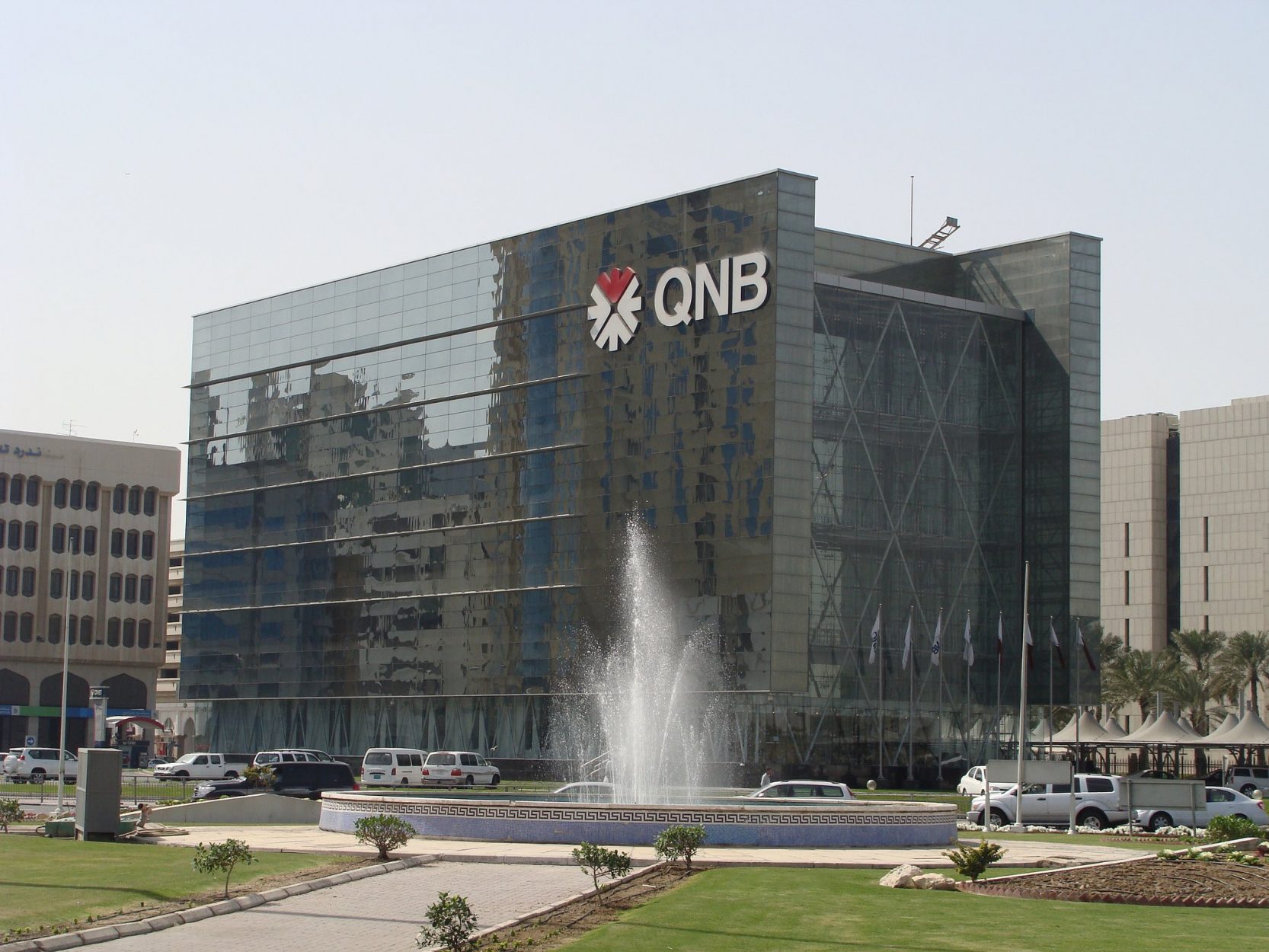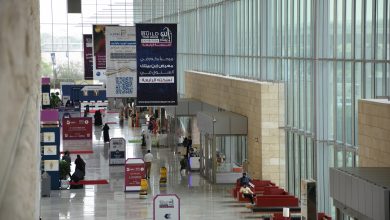QNB Economic Commentary: China to Enact Policy Easing Due to Fears of a Sharper Slowdown
تقرير QNB: الصين ستعتمد سياسة نقدية مُيسرة بسبب المخاوف من حدوث تباطؤ حاد في الأداء الاقتصادي
QNA
Doha: Despite the recent concerns about the Covid-19 Omicron variant, the global economic recovery remains strong and activity indicators in most advanced economies are comfortably within expansion territory. In fact, a strong recovery, along with inflationary pressures, is already leading to a U-turn in the policy guidance of several central banks. Policymakers are moving from accommodation to “normalization” or even tightening. This even led to a more “hawkish” stance of the US Federal Reserve and the European Central Bank.
In contrast, China is experiencing a different macroeconomic and therefore policy dynamics. After a sudden collapse in demand and activity in Q1 2020, when China’s GDP contracted by 6.8% year-on-year, the country performed an impressive recovery that lasted from mid-2020 to mid-2021. China was the first and only large economy to present positive GDP growth last year, being ahead of other countries in the economic cycle by several quarters.
In a press release issued today Qatar National Bank said the strong performance led to an early withdrawal of policy stimulus in China several months ago. On the fiscal side, policy tightened as tax relief measures expired, extraordinary social transfers moderated and support for public investments dwindled. On the monetary side, liquidity injection moderated significantly since Q4 2020. Money supply (M2) growth dropped to a lower rate than nominal GDP growth, which consequently implied a more restrictive monetary policy stance in the beginning of this year. Moreover, the government also started a comprehensive campaign to tighten regulation on the real estate and corporate sectors, dampening business sentiment and containing a more significant rebound in private investments since then.
As a result, the recovery in China has been losing momentum more rapidly than in other major economies since Q2 2021. The manufacturing Purchasing Managers’ Index (PMI) of China, a survey-based indicator that measures whether several components of activity improved or deteriorated versus the previous month, peaked at 55 in November 2020, before a gradual slide towards 50 in November 2021. Traditionally, an index reading of 50 serves as a threshold to separate contractionary (below 50) from expansionary (above 50) changes in business conditions. In other words, higher frequency data is indicating that China activity is closing-in to contraction territory.
In light of that, Chinese policymakers have already started to revert from policy tightening to policy easing. In recent weeks, the Peoples Bank of China (PBOC) decided to cut the required reserve ratio (RRR) to a broader set of financial institutions by 50 basis points. The measure aims to increase support to the real economy, releasing RMB 1.2 trillion (about USD 190 Bn) to the banking system. This was only the first act of a more comprehensive cycle of easing measures e.g., more recently, the PBOC reduced its one-year loan prime rate by 5bp.
In our view, three factors support the “dovish” (supportive, accommodating) pivot of policymakers in China.
First, leading indicators are pointing to a sharper deceleration of growth in China over the coming months, in a movement that can make GDP growth drop below the expected policy target of “around 5%” for 2022. Chinas credit impulse, an indicator that measures the relative thrust from social financing for real activity, leading other activity indicators by about 6-months, is pointing to a sharp deceleration of growth in China over the next semester. Stimulus measures are necessary to turn the credit story around towards a more supportive stance.
Second, local Covid-19 outbreaks are becoming more frequent in China, which leads to the imposition of tighter social distancing measures and localized lockdowns. This is also starting to weigh on growth as outbreaks spur a drop in activity around the location where cases concentrate. The Chinese government maintains a “zero Covid-19” policy and is expected to continue to do so over the medium-term, deploying robust restriction measures against local outbreaks. The arrival of the Omicron variant in China adds another layer of complexity to this story, as localized outbreaks could become even more pervasive.
Third, Covid-19 related global supply constraints in several industries continue to have spill over effects in Chinese manufacturing, placing an additional cap on overall growth in the country. Supply constraints include low inventory levels as well as bottlenecks and other disruptions in manufacturing output and transportation infrastructure, such as ports, containers, and logistic networks. We expect that supply constraints will only ease meaningfully by mid- to late-2022, the time when key industries are expected to be operating at normalized capacity. This will put a cap on Chinas manufacturing growth for next year.
All in all, the PBOC decision to cut the RRR and lending rates, thus starting a new easing cycle is justified by Chinas significant slowdown as well as the challenges posed by Covid-19 outbreaks and supply constraints.
قنا
الدوحة: أشار أحدث تقرير لبنك قطر الوطني /QNB/ إلى أنه على الرغم من المخاوف الأخيرة بشأن سلالة أوميكرون المتحورة من /كوفيد-19/، إلا أن التعافي الاقتصادي العالمي لا يزال قوياً ، وأن مؤشرات النشاط في معظم الاقتصادات المتقدمة تعتبر بشكل مريح في مرحلة توسع.
ورأى أن هذا التعافي القوي، أدى في الواقع إلى جانب الضغوط المرتبطة بالتضخم، إلى حدوث تغيرات جذرية في السياسات النقدية للعديد من البنوك المركزية، حيث بدأ صناع السياسات في تغيير موقفهم من التيسير إلى “التطبيع” أو حتى التشديد ، ليؤدي ذلك إلى تبني بنك الاحتياطي الفيدرالي الأمريكي والبنك المركزي الأوروبي لمواقف تميل أكثر نحو “التشديد”.
وفي المقابل، ذكر التقرير أن الصين تمر حالياً ببيئة اقتصاد كلي مختلفة، وبالتالي فإن العوامل المحركة لسياستها النقدية مختلفة، موضحا أنه بعد الانهيار المفاجئ في الطلب والنشاط في الربع الأول من عام 2020، عندما تقلص الناتج المحلي الإجمالي للصين بنسبة 6.8% على أساس سنوي، حققت البلاد تعافياً كبيراً استمر من منتصف عام 2020 إلى منتصف عام 2021 ، لافتا الى أن الصين الاقتصاد الكبير الوحيد الذي حقق نمواً إيجابياً في الناتج المحلي الإجمالي خلال العام الماضي، كانت متفوقة على البلدان الأخرى في الدورة الاقتصادية خلال عدة أرباع.
ومضى التقرير إلى القول ” لكن هذا الأداء القوي أدى إلى سحب مبكر لسياسات التحفيز في الصين منذ عدة أشهر، ففي الجانب المالي، تم تشديد السياسة مع إنهاء الإعفاءات الضريبية وتخفيض الإعانات الاجتماعية الاستثنائية وتقليص الدعم للاستثمارات العامة. وعلى الجانب النقدي، تراجعت عمليات ضخ السيولة بشكل ملحوظ منذ الربع الأخير من عام 2020 . وانخفض نمو المعروض النقدي (M2) إلى معدل أقل من نمو الناتج المحلي الإجمالي الاسمي، مما يعني ضمنياً تبني موقف أكثر تشدداً بشأن السياسة النقدية في بداية العام الحالي. علاوة على ذلك، بدأت الحكومة أيضاً حملة شاملة لتشديد الضوابط في قطاعي العقارات والشركات، مما أدى إلى إضعاف معنويات الأعمال واحتواء التعافي الكبير في الاستثمارات الخاصة منذ ذلك الحين ” .
وأوضح تقرير بنك قطر الوطني أنه نتيجة لذلك، فقد التعافي الاقتصادي في الصين الزخم بسرعة أكبر من الاقتصادات الرئيسية الأخرى منذ الربع الثاني من عام 2021 ، وبلغ مؤشر مديري مشتريات قطاع التصنيع في الصين، وهو مؤشر قائم على الاستطلاعات يرصد التحسن أو التدهور في عدة مكونات للنشاط مقارنة مع الشهر السابق، ذروته عند 55 نقطة في نوفمبر 2020، قبل تراجعه تدريجياً إلى حوالي 50 نقطة في نوفمبر 2021 ، مبينا أنه عادةً يعتبر مستوى 50 نقطة هو الحد الفاصل في المؤشر بين التغيرات الانكماشية (أقل من 50) والتغيرات التوسعية (فوق 50) في ظروف الأعمال ، وبعبارة أخرى، تشير البيانات عالية التردد إلى أن النشاط الاقتصادي في الصين يقترب من منطقة الانكماش ، وفقا للتقرير .




